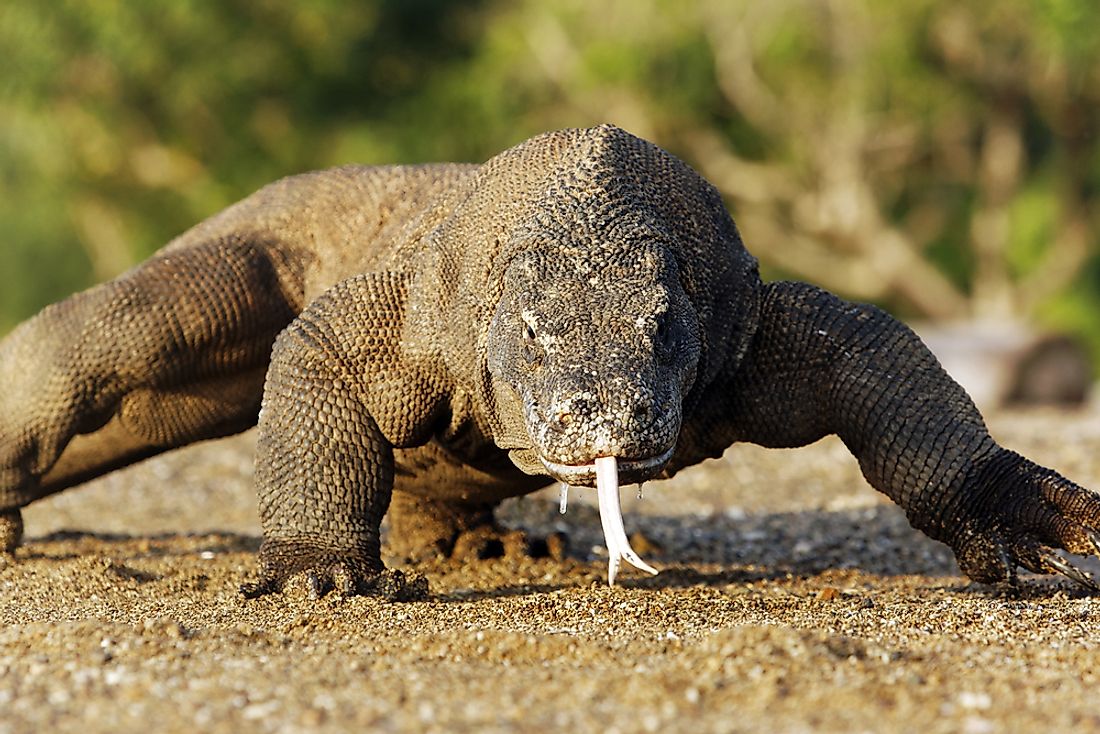How Many Komodo Dragons Are Left In The World?

The Komodo dragon (Varanus komodoensis) gets its name from the Komodo Islands in Indonesia where they dwell. They are also found in the neighboring islands of Flores and Rinca. It rightfully takes its place as the King of the Lizards largely because of its sheer size, which makes it the largest lizard in the world.
Origin Of The Komodo
Although the Komodo dragon is famous in the Komodo islands of Indonesia and other surrounding islands, according to LiveScience, this huge reptile originated from Australia as the fossil records show that they moved to the Indonesian Islands in about 900,000 years ago. Initially, the scientists thought that the Komodo dragon evolved from a small ancestor in the islands of Indonesia, and grew in size over time because it lacked competitors. However, in the last few years, scientists have discovered several fossils in the eastern part of Australia which dates back to between 300,000 and 4 million years ago that belong to Komodo dragon. The fossils are identical to the bones of the present day Komodo dragon. The scientists also think that the Komodo dragon disappeared in Australia in about 50,000 years ago. The disappearance of the Komodo dragon in Australia coincided with the arrival of humans in the continent
Habitat And Distribution
The Komodo dragon is a rare species inhabiting only the volcanic islands of Indonesia including the island of Komodo. Other islands where the Komodo dragons are found include Gili Dasami, Gili Montang, and Rinca, which are all within the Komodo National Park. They are also found roaming freely in the Island of Flores. They live in differentiated climates within these areas, which could vary from tropical forest land and monsoon forest to savannas depending on availability of prey which usually includes mammals like deer. The burrows in which they live keep them cool during the day when temperatures are high and provide warmth when the temperature plummets during the night.
Behavior
Komodo dragons stay active mostly throughout the day but have shown nocturnal behavior in some cases. Their short, stocky legs can sprint at a speed of 12.42 mph and climbing trees for the case of younger komodos utilizing their sharp claws. These claws morph into weapons as the lizard matures since it becomes too heavy to climb. Hunting is done primarily in the afternoons but during the hottest periods of the day the dragon retreats into sheds which can be identified with droppings; this is also ambush ground for deer.
Population And The Threat Of extinction
Currently, there are only about 6,000 of these predators left in the wild, and 350 breeding females in this cohort. This is a fraction of their initial population. Out of the whole population, 1,700 are found on Komodo Island, 1,300 are found on Rinca Island, 100 are found on the Gili Motang Island, and 2,000 are found on Flores Island. Despite being formidable, they are most vulnerable to human activities which could easily be a fast track to extinction, and consequently, they have been listed as a vulnerable species in the Red List of Threatened Species. However, they have attracted an influx of tourists in recent times which hopefully should play a hand in their conservation as an economic incentive.
Conservation Measures
The main threat to the Komodo dragon as a vulnerable species stems mostly from human activities, which include poaching and degradation of their habitat. In this view, measures to protect them have entailed keeping them in protected areas as well as discouraging tourists and locals alike from purchasing merchandise that comes directly or indirectly from the Komodo dragons. These include skins and wood from their habitat. In 1992, the first Komodos were hatched outside Indonesia, in the Smithsonian Zoo. According to the zoo, four clutches have been hatched so far, and about 55 of the offspring are found in more than 30 zoos around the world,











